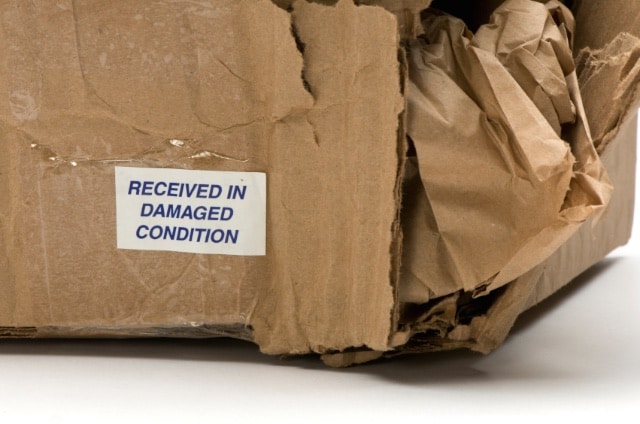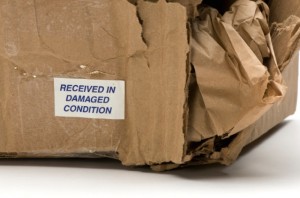
Establishing a Reliability Goal
 The basic question of ‘How long should it last?” may be the first question you consider related to reliability of your product or production equipment. Ideally we would like to create a product that will never fail for our customers, or a set of equipment that just keeps running.
The basic question of ‘How long should it last?” may be the first question you consider related to reliability of your product or production equipment. Ideally we would like to create a product that will never fail for our customers, or a set of equipment that just keeps running.
Then reality occurs.
Components have latent defects, assembly methods vary, customer use demands more than expected, or an unanticipated failure mechanism occurs. Failure do happen and we generally accept this is a possibility.
A reliability goal is way to articulate the possibility of failure. If the desire is to have very little chance of failure, then setting a very high goal may require redundant design elements, expensive components (technology dependent, of course), and extended development time. Reliability is a balance of cost, technology, and expectations Setting a goal communicates the intention or agreement.
Reliability Definition
On page 1 of Practical Reliability Engineering by Patrick O’Connor and Andre Kleyner we find the definition of reliability:
The probability that an item will perform a required function without failure under stated conditions for a stated period of time.
Note: there are four elements in the definition, function, environment, probability and duration. Stating only one, say the probability element by using MTBF or duration element by using 5 years, does not provide sufficient information for use as a reliability goal.
Let’s break this down a little and in five steps create a useful reliability goal.
Step 1: Gather information
The entire goal or some elements of the goal may already be available. Review the requirements documents to identify the four reliability goal elements. Also, determine the dominant customer and business expectations. For example, customer may have a product retirement expectation of 5 years (time to buy new model), or they may have exceptionally high costs to their business when your product fails (the customer pain with a failure).
Also look for regulatory or contractual elements that are part of the reliability goal. Warranty, service contracts, field studies, along with internal policies that may impact the reliability goal.
In short, find out what already exists and the boundaries that may impact the reliability goal specifics.
Step 2: Function
The requirements document most likely contains functional requirements. For the purpose of the reliability goal, summarize to the primary function. For example, if developing a new simple cell phone, the primary function may be as simple as ‘to make and receive voice calls’.
Defining the function helps us to know when a failure occurs, i.e. a function ceases to occur.
Step 3: Environment
This includes the weather (temperature, humidity, vibration, dust, etc.) plus use (cycles per day, operating time per day, etc.). For many products this section should be an extensive characterization of stress distributions. Given the various types of environments: indoor controlled environment, outdoor sheltered, airborne inhabited cabin, etc.) you may need to detail the temperature distribution of values (more than min max specifications – that’s not useful), portion of expected customers in different environments, and so on.
For the use conditions, include light, medium and heavy use profiles. Includes expected range and distribution of operations. Include the essential information so the team understands what a ‘day in the life’ of you product includes.
For the reliability goal statement, if you have the types of environments detailed in supporting documents, you can reference just the type of environment. For example the cell phone may have the ‘personal portable’ environment.
When in doubt or need additional detail – ask your customers about their environmental conditions and use profile expectations.
Step 4: Duration
This is the answer to how long a product should function, plus a bit more. You should define at least three durations: early life, warranty, and practical life.
Early failures (out of box failures) happen. Early failure damage customer satisfaction and may impact market share or market acceptance of your product. The causes of early life failures often stem from supplier or assembly errors, transportation or installation damage, or latent defects or poor product design. Many organization already track early life failures, so use that duration.
For the cell phone example, let’s use the first month starting with initial phone activation.
Warranty terms often include a duration. In some markets the warranty period is mandated, in others it is driven by market expectations. In any case, use the warranty duration as an element of the reliability goal. For the cell phone example, let’s assume we offer a 1 year warranty period.
Practical life is the period of time we and our customer expect a product will function without failure. This is often longer than the warranty period. For example, many office products should last 5 years, or today’s automobiles should operate with only minor repairs and maintenance for 10 years. For the cell phone, let’s use 5 years (it’s a simple phone thus upgrading for more features is not part of the target market behavior).
Step 5: Probability
Now set a reliability value (probability of successfully) operating over each of three duration.
Early life has a significant impact on customer satisfaction thus we may want to set this at a very high reliability value. This is balanced by what is technically possible in a cost effective manner.
The warranty period may be an economic decision balancing the cost of failure (warranty costs) with profitability and considering the technology capability.
The practical life period may depend on a few dominant failure mechanisms that heavy users experience sooner than light users. So, balancing the expected failure rates for different sets of conditions and user groups may help set an appropriate reliability value. Another consideration is the chance of the end customer being happy with the durability of the product and remaining brand loyal of the next purchase.
As you can see, duration and probability are coupled. For each duration set a probability of success. Thus for the cell phone example, we may state the three couplets as early life duration of 1 month with reliability of 99%, warranty period of 1 year with reliability of 95%, and practical life of 5 years with reliability of 90%.
Summary
For the cell phone example our goal is easily stated as
The XYZ simple cell phone to make and receive voice call in a personal portable environment with 99% reliability over 1 month, 95% reliability over the 1 year warranty period, and with reliability of 90% over 5 years.
That one sentence provides the reliability engineering guidance to the entire team. The shipping & packaging engineers may struggle with the 1 month 99% reliable goal, whereas the hinge and button components my find the five years of heavy use to be an important element for the design.
The intent is to provide the team and your customer with a very clear reliability goal.
How do you set reliability goals? Any hints or tips to help find the right information to set meaningful goal statements?
Leave a Reply